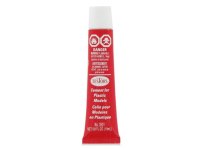Tiberius
10 kW
Hi guys,
I tried some experiments with bending various plastics. I had some clear acrylic sheet lying around so I set about bending that with the aid of a hot air gun. The first experiment hand bending a piece in the vice was ok. I also tried lining my metal bending machine with plywood and bending hot acrylic. I managed a really tight bend that way without cracking the sheet. But the best result I got was when I worked it over a wooden former.
View attachment 2
View attachment 1
Another interesting thing was with PVC. Using a section of the duct I started with, I found it quite easy to hot work this. But I also found I could cold form a bend in it just using a normal metal bending machine with a little care.

BTW, the wooden former is the shape of my prototype battery box. It was built as a "plug" to take a mould from, in order to make a glass fibre box. The hot air gun I used is a fairly serious one, with adjustable temperature and a fishtail nozzle so it can concentrate the heat along a line.
Nick
I tried some experiments with bending various plastics. I had some clear acrylic sheet lying around so I set about bending that with the aid of a hot air gun. The first experiment hand bending a piece in the vice was ok. I also tried lining my metal bending machine with plywood and bending hot acrylic. I managed a really tight bend that way without cracking the sheet. But the best result I got was when I worked it over a wooden former.
View attachment 2
View attachment 1
Another interesting thing was with PVC. Using a section of the duct I started with, I found it quite easy to hot work this. But I also found I could cold form a bend in it just using a normal metal bending machine with a little care.

BTW, the wooden former is the shape of my prototype battery box. It was built as a "plug" to take a mould from, in order to make a glass fibre box. The hot air gun I used is a fairly serious one, with adjustable temperature and a fishtail nozzle so it can concentrate the heat along a line.
Nick


